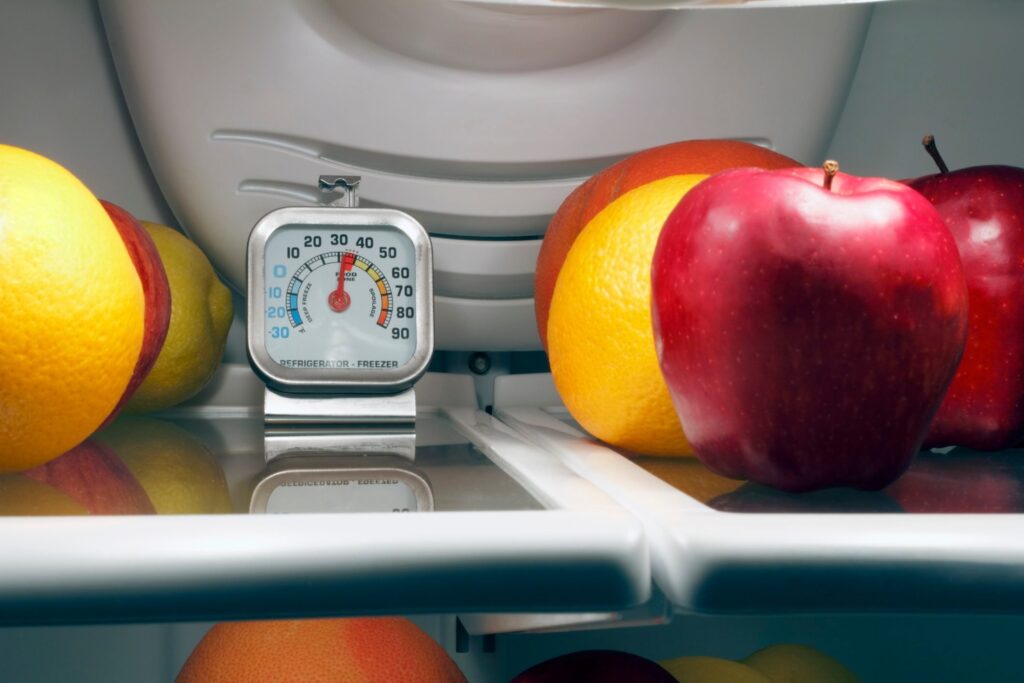Your Sub-Zero refrigerator is a cornerstone of your kitchen, safeguarding the freshness and safety of your food. But are you getting the most out of it? Maintaining optimal Sub-Zero temperatures is crucial for preserving flavors, textures, and nutritional value. In this comprehensive guide, we’ll unravel the science behind ideal Sub-Zero temperature settings, explore how to achieve and maintain them, and provide expert tips to ensure your appliance performs at its peak. Discover the secrets to unlocking the full potential of your refrigerator and enjoying food at its best.
Why Temperature Matters in Refrigeration
Refrigeration slows down bacterial growth, prolonging the freshness and safety of food. The precise temperature settings play a crucial role in this process. Incorrect temperatures can lead to food spoilage, waste, and potential health risks.
Ideal Sub-Zero Temperature Settings for Refrigerators & Freezers
Recommended Temperatures for Optimal Food Preservation
The ideal temperature settings for a Sub-Zero refrigerator are:
- Refrigerator Compartment: 35°F (1.7°C)
- Freezer Compartment: 0°F (-18°C)
These settings ensure that food remains fresh without freezing and that frozen items stay at a safe temperature.
Adjusting the Temperature for Different Types of Food
Certain foods require specific temperature ranges for optimal preservation:
- Dairy Products: Store at 34-38°F (1-3°C) to maintain freshness and prevent spoilage.
- Meats and Fish: Keep at 32-36°F (0-2°C) to inhibit bacterial growth.
- Fruits and Vegetables: Maintain at 36-40°F (2-4°C) to preserve texture and flavor.
How to Measure the Temperature in Fridges and Freezers
Accurately measuring the temperature in your refrigerator and freezer is essential for ensuring optimal food storage conditions. Here’s a step-by-step guide on how to do it:
Tools You’ll Need
- Refrigerator/Freezer Thermometer: A specialized thermometer designed for use in cold environments.
- Digital or Analog Thermometers: Both types are suitable, but digital thermometers often provide more precise readings.
Step-by-Step Guide
- Place the Thermometer in the Fridge:
- For the Refrigerator: Place the thermometer in the center of the middle shelf. Avoid placing it near the walls, doors, or near items that could affect the reading.
- For the Freezer: Place the thermometer between packages of frozen food. This location ensures a more accurate measure of the average temperature.
- Wait for a Stable Reading:
- Allow the thermometer to sit in the appliance for at least 24 hours. This period ensures that the thermometer acclimates to the temperature of the fridge or freezer.
- Check the Reading:
- Refrigerator: After 24 hours, check the thermometer. It should read around 35°F (1.7°C).
- Freezer: For the freezer, the reading should be around 0°F (-18°C).
- Adjust Settings if Necessary:
- If the temperature readings are off, adjust the thermostat settings of your refrigerator or freezer. Wait another 24 hours before checking the thermometer again to ensure the temperature has stabilized.
- Regular Monitoring:
- Regularly check the temperatures to ensure they remain within the recommended ranges. This habit is particularly important during seasonal changes or after restocking large amounts of food.
Tips for Maintaining Consistent Temperatures
Regular Monitoring and Adjustment
- Use Thermometers: Place thermometers in both the refrigerator and freezer compartments to monitor temperatures regularly.
- Adjust Settings Seasonally: Ambient temperatures can affect your refrigerator’s efficiency. Adjust settings during summer and winter to maintain optimal temperatures.
Proper Storage Practices
- Avoid Overloading: Do not overload your refrigerator as this can restrict air circulation, leading to uneven temperatures.
- Organize Food Items: Store items in designated areas. For instance, keep dairy products on the top shelves, meats in the coldest part, and fruits and vegetables in the crisper drawers.
Regular Maintenance
- Clean Condenser Coils: Dust and dirt on condenser coils can hinder performance. Clean them every six months.
- Check Door Seals: Ensure door seals are tight and free from cracks to prevent cool air from escaping.
Common Issues and Troubleshooting
- Inconsistent Readings: If you notice fluctuating temperatures, it could be due to frequent door openings or an overloaded fridge/freezer. Address these issues and recheck the temperature.
- Faulty Thermometers: Ensure that your thermometer is functioning correctly. Replace it if you suspect it’s giving inaccurate readings.
Conclusion
Maintaining optimal Sub-Zero temperature settings for refrigerators and freezers is crucial for food safety and longevity. By adhering to the recommended settings and maintaining consistent temperature, you can ensure that your food remains fresh and safe. Regular maintenance and opting for professional service from Platinum Sub Zero Repair will help you keep your refrigerator functioning efficiently, providing you with the best refrigeration experience.
Follow us to stay updated with our latest news and posts!


